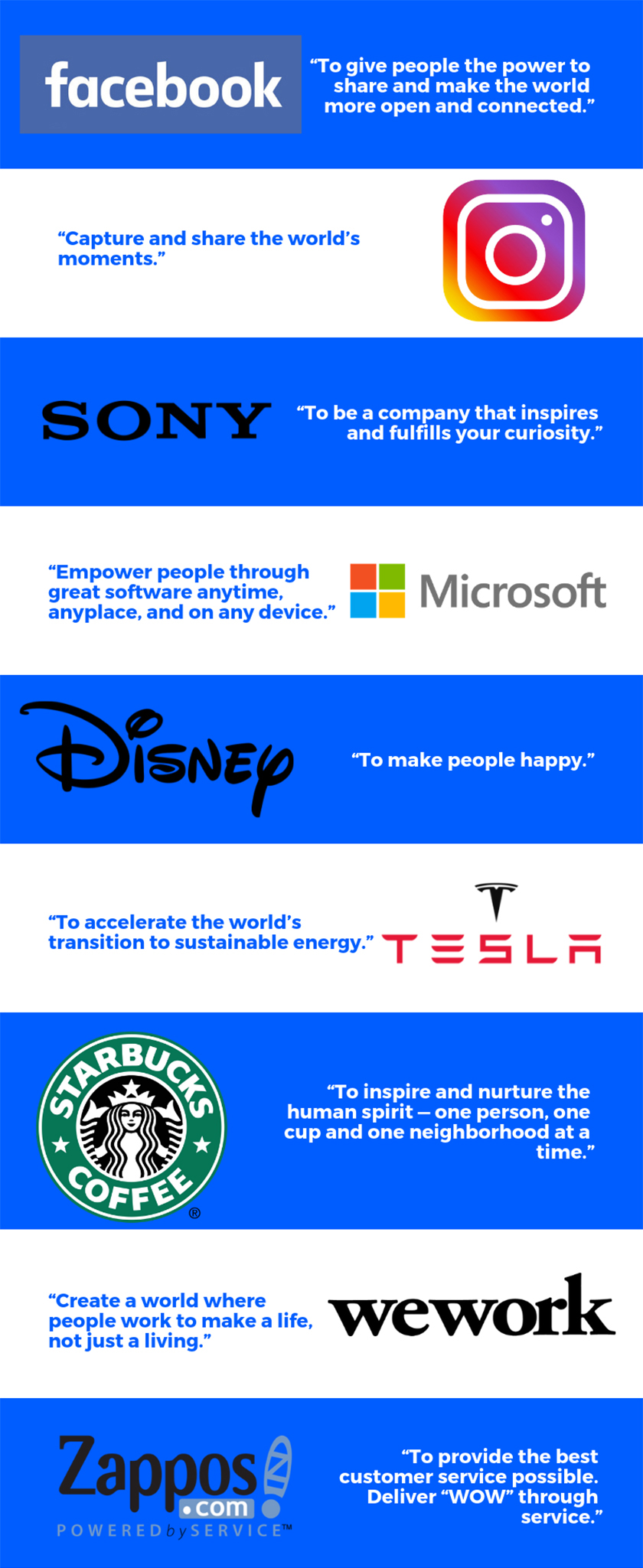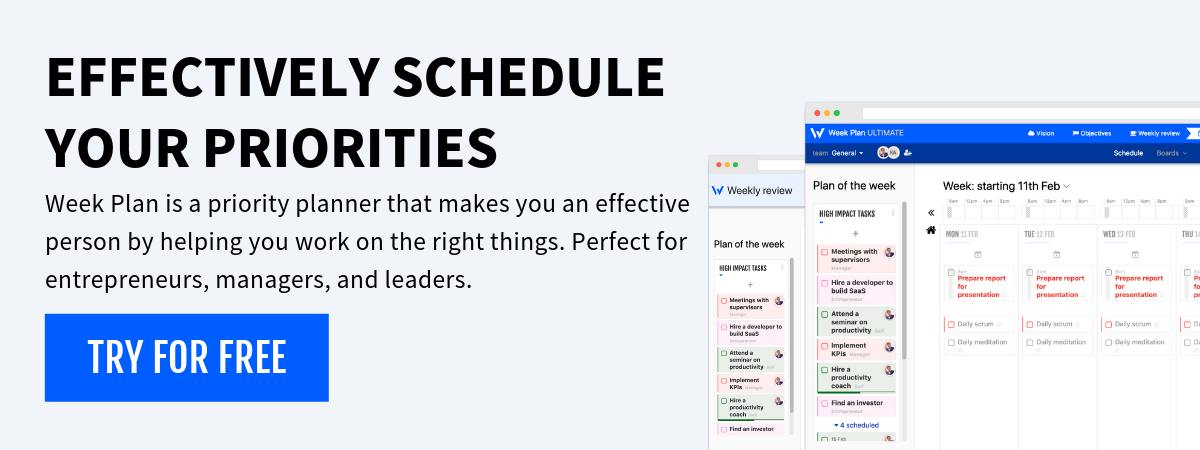What is a mission statement
Simply put, a mission statement is a short paragraph or sentence that highlights how you’ll achieve your vision.
The mission is the means to the end (your vision).
It’s also a strategic objective for achieving your BHAG (Big, Hairy, Audacious Goals).
If vision is about the future, the mission is about the present state — actions that contribute to the fulfillment of your goals.
And if vision is the dreaming phase, the mission is the doing phase. Vision is the why. The mission is how.
How to write a mission statement
A mission statement builds on your vision, core values, and BHAGs. Having a vision is enough. But creating a mission statement will take you farther.
A good mission statement will answer the What, Who, and How.
- WHAT you will do (mission)
- WHO will benefit your mission
- HOW you will do it
According to legendary management guru Peter Drucker, “The mission statement has to express the contribution the enterprise plans to make to society, to economy, to the customer.”
Consider Amazon’s mission statement:
“We strive to offer our customers the lowest possible prices, the best available selection, and the utmost convenience.”
It’s a compliment to the giant retailer’s vision statement:
“To be Earth’s most customer-centric company, where customers can find and discover anything they might want to buy online.”
Examples of mission statements

Different between a vision statement and a mission statement
A vision statement is slightly different from a mission statement. Vision and mission are separate concepts. However, they are interdependent.
The vision statement is future-oriented and it answers the question, “What do I want to be?” On the other hand, a mission statement is present-oriented and it complements the vision statement.
What a Vision Statement is:
- It describes your ideal future.
- It answers the question, “Where do I want to be 10 or 30 years from now?”
- It’s future-oriented.
What a Mission Statement is:
- It describes how you intend to achieve your vision.
- It answers the question, “How do I fulfill my long-term goals?”
- It’s present-oriented.

More Posts
10 Best Task Management Software for Small Teams
In today’s fast-paced world, small teams simultaneously juggle multiple tasks and projects. With deadlines hanging over your head and team members spread out across different roles, it becomes essential to use task management...
13 Tips to Overcome Task Avoidance and Stop Procrastination
Many people struggle with putting things off, not just because they’re lazy. It’s often a way to avoid stress or discomfort. Saying “I’ll do it later” can lead to a big pile of...
A Comprehensive Guide to Bullet Journal for Productivity
The Bullet Journal was created by Ryder Carroll. It is a system that merges mindfulness and productivity. Carroll made it to handle his ADHD. Now, it helps people manage tasks, track goals, and reflect...
10 Ways to Become a Better Entrepreneur
We’ve all had those days when we’re so tired with our desk jobs that we stop and think about how fun it would have been if you were Bill Gates. I always thought...